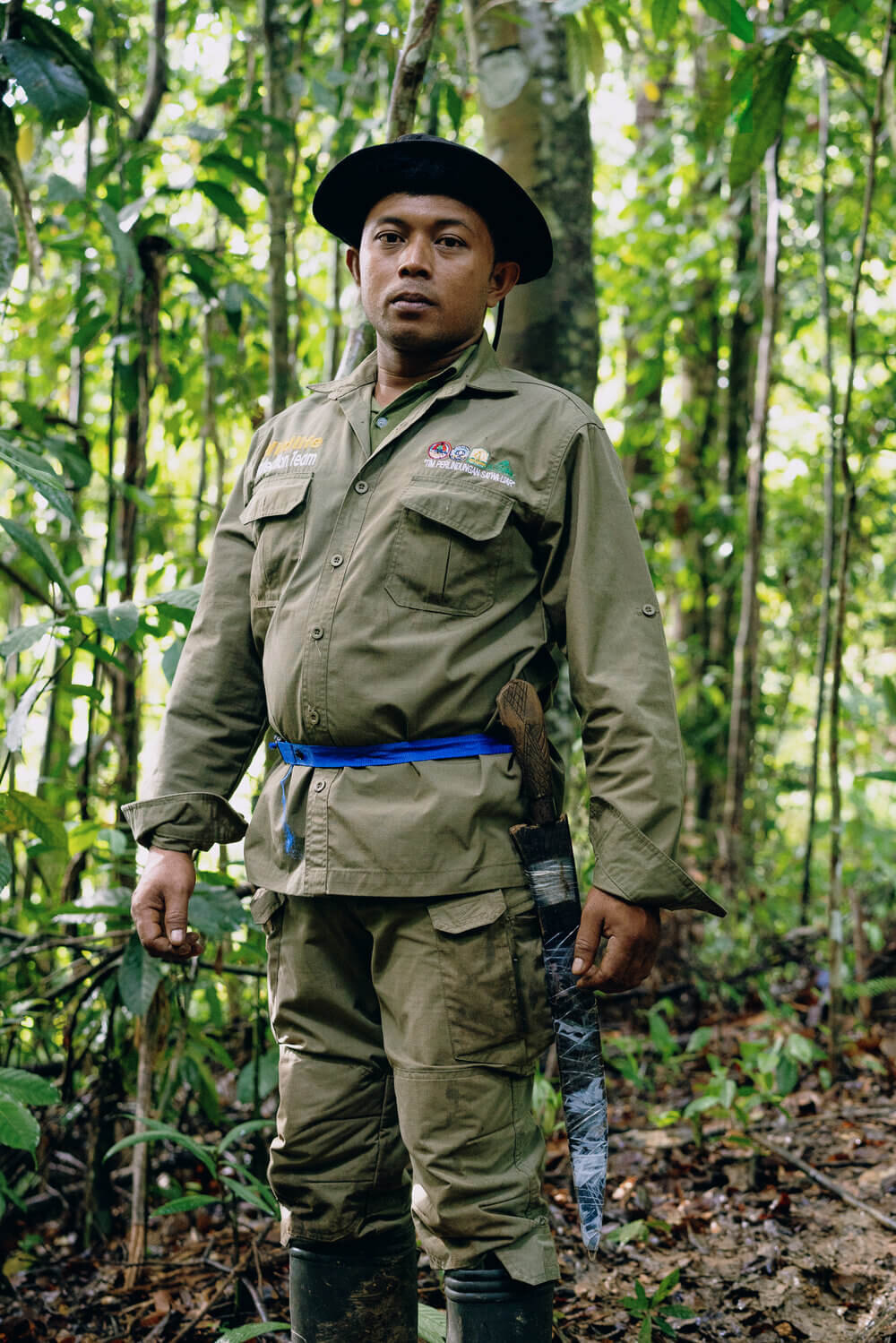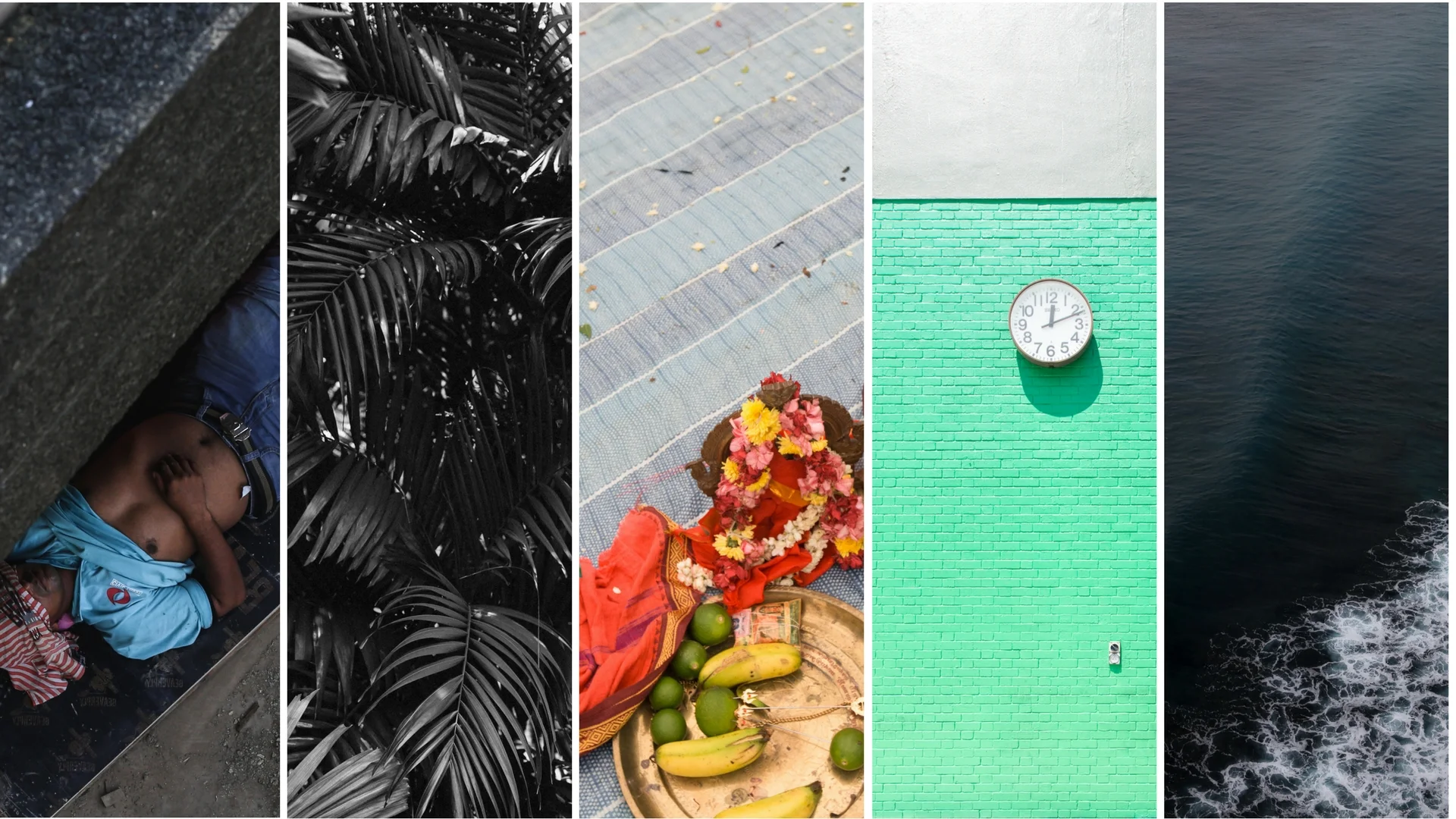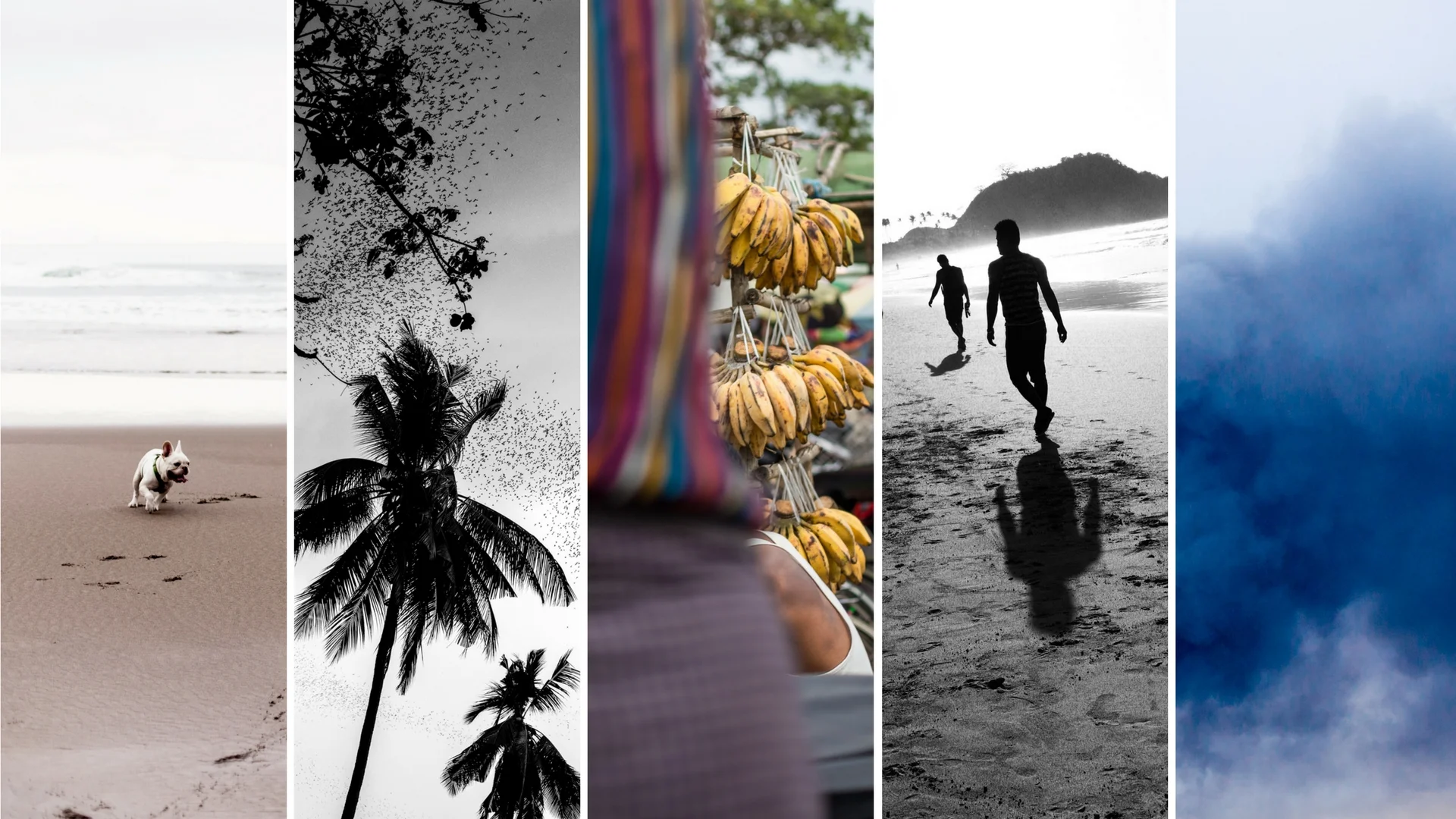TIGER RANGERS
On the trail of the critically endangered Sumatran tiger with the men fighting to save the species from extinction.
FEATURE Nº20
Ranger Hendra in the Leuser National Park.
The tiger had finished eating the ranger’s dinner, a meal of nasi goreng chicken and rice, and now beast and man crouched a few metres from each other their eyes locked.
The sun was sinking over the Sumatran jungle canopy. Hoots of Siamang black gibbon called out. Leeches rained down from branches and sucked blood through the ranger’s skin, which was goose-pimpled in fear.
The nearest village was a three-hour canoe journey down-river. The ranger’s last outpost, a log cabin, was a 10-mile hike away. There was no phone signal, not that it would have mattered.
The tiger licked a paw and purred like a giant housecat. The ranger did as he always instructed his team to do in this situation: “You freeze. You don’t move. You wait.”
Thirty minutes passed. The ranger knew it was time to act, so he decided to negotiate with the tiger.
“Excuse me Grandma, nenek,” the ranger whispered at the tiger. “We love you, but you are in our path. Would it be okay if we can pass you, please, terimah kasih? We gave you all our food.”
The tiger seemed indifferent to the question.
The ranger, a former Aceh rebel fighter turned conservationist named Hendra, along with his two deputies, began to inch away from the tiger and back down the path from which they came.
They crept in the darkness for a few hundred metres, where they found their earlier campsite, pitched their tent, zipped themselves inside their sleeping bags and breathed a sigh of relief, “Terimah kasih Grandma, thank you,” Hendra said aloud.
Ranger Hendra sets a camera trap fitted with a motion sensor to capture tigers in the Leuser National Park.
At about midnight one of the two younger rangers had to pee. As he began to relieve himself stood in the tent entrance, the deep rumbling yawn of the tiger jolted him. It was so close he could feel the animal’s warmth. The tiger lazed unbothered in the leaves a few metres away. The ranger slipped silently back into his tent and zipped the flimsy door shut. As he listened to the leaves rustle and the tiger breathing, after a while his fear made way for tiredness and he and the other rangers fell asleep.
The next morning they awoke, made their breakfast of nasi goreng, packed up their tent and began their hike into the jungle, pausing as they passed the spot where they encountered the tiger the previous night. Then they pressed on to embark on their 15-day footpatrol of the Leuser National Park, on a mission to find animal poachers and illegal loggers as they defend the final habitat of the Sumatran tiger, the most critically endangered subspecies of tiger in the world.
“The tiger, nenek grandma, knows we are here to protect her. She will not kill us,” Hendra said, as he finished telling his story to our group after dinner at the remote Ranger’s Outpost, a few miles from where his encounter took place.
The origin of the name “nenek grandma” is simple: “The tiger is an old soul in this land and must be respected,” Hendra said.
That night I fell asleep in my bunk bed with sounds of the jungle and Hendra’s story buzzing between my ears. The next morning we would join the footpatrol and film the rangers as they perform their job, protecting the last of the tigers they call grandma.
ON THE TRAIL
I was trying not to think about the tiger story as we left the ranger hut and entered the trail the next morning.
Hendra marched in front, a machete dangling at his side, a cowboy hat on his head and dressed in a khaki safari suit embossed with the words Wildlife Protection Team Ranger in yellow on his chest and back. Next in line was Dedi, the Team Co-ordinator of the Forum Konservasi Leuser (FKL), who was in charge of the Wildlife Protection Team and 25 other ranger teams dotted throughout the 950,000 hectare jungle.
Hendra and Dedi moved along the trail methodically, scanning the trees ahead, searching the ground for tell-tale signs of poachers. Behind me I could hear the rest of our crew: producer, fixer, camera assistant, sound, and two other rangers.
The riverside trail we walked along was used by all the major animals, known as megafauna: elephants, rhinos, orangutans and tigers. All are listed as critically endangered in this last habitat on Earth where these species live together.
With each snap of a branch or squelch of mud I was sure would be followed by the unmistakable rumble of a Sumatran tiger alerted to our presence. An electric charge of adrenalin hung in the air as we ventured deeper into the jungle.
After an hour’s hike we saw no animals, only leeches, plucked from our bloodied skin.
Before we left the ranger station that morning there was talk that we might get “very lucky and see a tiger”. But as time passed the adrenalin subsided and the details of the jungle came into focus: Rushing water, distant gibbon hoots, swaying of trees, the high-pitched echo of cicadas, the croak of frogs.
We lugged our camera gear up hills, down slopes, edged across rivers, climbed behind waterfalls, hauled, hacked, slipped, slid and stumbled our way through the dense undergrowth. We were at the mercy of the jungle and our bodies proved feeble and unworthy.
Canoe boats are the only means to reach the ranger station.
Rangers Hendra and Fendi.
We were drenched in sweat, bloodied from scrapes that appeared from nowhere. We plundered on. Our destination was a set of elephant bones located somewhere on a ridge about another hour’s hike. The bones belonged to an elephant that had died in horrific pain from a wound sustained through a poacher’s trap.
A ranger holds a poacher’s snare trap used to capture tigers.
WAY OF THE POACHER
We learned about the poachers and their many ways to kill and maim. Their elephant traps were simple and medieval: a heavy wooden plate hammered with dozens of nine-inch nails pointing upward, concealed under leaves on well-trodden animal trails. The elephant stepped on the trap, bringing its four-tonne weight down on the nails.
In agony the elephant limped on until infection set in and eventually was left by its herd to die alone suffering. Only then would the poachers pounce and dismember the animal. No part of the massive beast was wasted. And this was true also for other megafauna sold in the illegal wildlife trade, including the most prized, the Sumatran tiger.
As little as 100 years ago, 100,000 wild tigers roamed Asia, but today across the continent a mere 3,900 remain. The Sumatran subspecies is listed as “critically endangered” with 400 left in the Leuser ecosystem.
They are on the brink of extinction due to habitat loss, lack of prey due to overhunting, human-tiger conflict, and the primary threat: poaching. Hunting is their single greatest threat.
Every inch of the tiger is sold in China, from the skins, bones, teeth, organs. They are seen as status symbols of wealth and traded on black markets flaunted as medicines.
The poacher gangs, which are orchestrated from China with local contacts in Sumatra, have gone to enormous lengths to catch tigers, which means the rangers in return have to go to extraordinary lengths to stop them. Both sides win battles, but the poachers are winning the war.
Gangs of poachers enter the jungle and don’t emerge until they have a tiger. They can spend days and nights hunting. Their weapon of choice is a snare trap.
This consists of tying a sharp wire and rope into a noose to the end of a bamboo branch which is bent and wedged between sticks hidden from sight by dried leaves. To the naked eye it’s impossible to see the traps, which are placed on trails just like the one that we find ourselves walking along.
The tiger steps in the trap, the spring shuts on the paw. Over days the distressed tiger tries to free itself, causing the wire to grind through fur and flesh until infection sets in.
Poachers snare traps used to catch tigers.
Ranger Adi.
Like the trapped elephant, the tiger dies an excruciatingly long death, with minimal wounds, so the maximum amount of animal can be sold.
We continued our walk along the tiger trail looking for poacher’s traps. We found nothing.
“The number of traps is decreasing, “ Hendra later told us. “In 2015 and 2016 we found hundreds. But since then the number has decreased because of our work.”
After an hour Hendra stopped in his tracks and raised his fist. Dedi stopped. I stopped, everyone stopped. After a few seconds, he moved forward, taking extra care with each step. A few metres ahead he bent down next to a thin bamboo branch seemingly growing straight out of the ground. He had found a tiger trap.
I focused the camera on him, as he grabbed a nearby stick and plunged it into a pile of leaves. There was a violent jolt, a whip of bamboo and spray of leaves and mud into the air, which settled after a few seconds to reveal Hendra holding a stick with the end frayed and caught in a wire-rope sling.
The team huddled around. They took photos, documented the co-ordinates with military precision, after which Hendra coiled the rope and wire and placed into a sac, which he put into his backpack. Another tiger trap had been foiled, and another tiger would live. One less to extinction.
Ranger Fajri.
A SHRINKING REALM
Sumatra was once known as the emerald of the equator, but in the last half century the huge island has lost about 70 per cent of its rainforest.
Palm oil, paper and coffee farming has continued its expansion, which has reduced the tiger’s habitat. When their habitat is encroached, this can lead the tigers to venture into human territory in search of food.
The result is what’s known as conflict tigers: the animal kills a human and in return the tiger is killed as retribution.
To try and reduce issues of conflict tigers the FKL rangers try to minimise the chance in the first place, by ensuring illegal encroachment of the habitat doesn’t happen.
The team, led by Dedi’s boss Rudi Putra, have been taking a chainsaw to illegal palm oil plantations since 2007.
The Leuser ecosystem is designated a UNESCO World Heritage Site and also is protected by Indonesia’s National Park system. The rangers identify the illegal plantations, confront the illegal loggers and then take a chainsaw to the trees. They have successfully restored thousands of hectares of habitat.
Ranger Jul.
Meanwhile, on our hike to the elephant bones, the light began to fade.
The decision was made to turn back. Nighttime is not a good time to be walking around the jungle with wild tigers.
Despite not seeing a tiger in the flesh, I felt their presence walking in their footprints through their realm.
That night back the ranger station we all huddled around Hendra’s computer. Hendra returned with a camera trap from the trail, which is a small camouflage box housing a motion-sensor camera.
Dedi popped the SD card into the computer and began to scroll through night vision video of the jungle.
Before long a male tiger filled the screen. But the majestic beast moved awkwardly, hopping, limping across a clearing. “Poachers,” Hendra said through clenched jaw.
Leaving the Leuser National Park by river canoe.
OUT OF THE JUNGLE
We left the jungle the following morning. After an hour-and-a-half journey down river in our motorised canoe, civilisation merged back into vision.
It started with the occasional canoe moored at the side of the river next to a hut. Then as we headed down river the number of huts and canoes multiplied, and before I could brace for submersion the sounds of engines, cars, horns and machines filled my ears.
The sight of a bridge with speeding cars and trucks came into view as we drew into dock at the village of Gelobmbang. The rickety wood jetty was a hive of activity as shirtless young men hauled palm oil fruit bunches off docked canoes. Another group of men operated a rust bucket machine, which made a heinous noise as it spat out shredded corn cobs into the water, creating a foaming cesspool of discarded corn, oil, trash, plastic bottles, a Coke can. A plastic bag floated by covered in something that looked like dried shit.
The smell of fuel and garbage mixed with the machine and the cars and lorries and I looked back up river to the jungle hills, where we had spent the last few days and where the tigers roam. And said the words, “What the fuck have we done?”
TIGER CONSERVATION
There are numerous NGOs and organisations working hard to preserve the Leuser National Park. For more information see below.



























